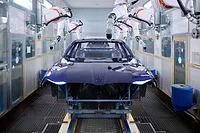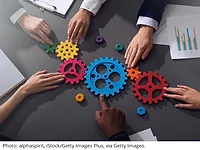Paint Shop 4.0 – Innovations for Greater Quality, Flexibility and Efficiency

Artificial intelligence, autonomous driving, electro-mobility, Internet of Things, Industry 4.0: we are living and working in an increasingly digitized world. Digitization is revolutionizing factory operations. Networked manufacturing plants will soon communicate with each other and respond immediately to changing framework conditions, efficiently producing high-quality customized products. Factory digitization is already a reality, as demonstrated at the “digital@DÜRR “open-house event held in October, 2016 at Dürr headquarters in Bietigheim-Bissingen, Germany, as well as presented at the TECH DAYS held in January, 2017 at the Southfield, Michigan, Campus.
Automotive painting, with its different and complex manufacturing steps, has rapidly evolved into an efficient, fully automated production process. In what ways can the efficiency of the processes, the quality of the painting, the flexibility and productivity of the plants be improved? Developments in the area of information and communication technology are creating considerable potential and acting as a catalyst for innovations in automation, machinery and application systems. Following are several examples.
New Generation of Robots
Modern robot stations use six-axis painting robots, which can be mounted on a rail in order to enlarge their operational range. This is used with ‘stop-and-go’ painting concepts, where the vehicle body is held stationary in the station and is painted by robots moving along it. Rail-mounted robots are also required for painting interiors in ‘tracking’ mode, where the vehicle body is conveyed through the station. Robot rails are enormous and elaborate components that must have a high degree of precision for exact robot movements. The steel structure that supports them must be similarly sized. The rail is open to the painting booth, and special measures must be taken to stop overspray getting into it. The rail must be enclosed within the clean room, restricting available space. Rails are a common solution, but not a perfect one. Dürr’s development of a third generation of robots addresses this issue.
Dürr’s formerly six-axis painting robot has been equipped with an additional rotary axis located between the second and third axis, which enables the robot to swivel the vertical arm. This additional axis gives the robot unprecedented mobility, range and flexibility (Figure 1). This means that a rail is no longer needed in stop-and-go stations as well as many tracking applications. A fully compatible six-axis version of the new painting robot is also available for applications that do not call for a seventh axis.
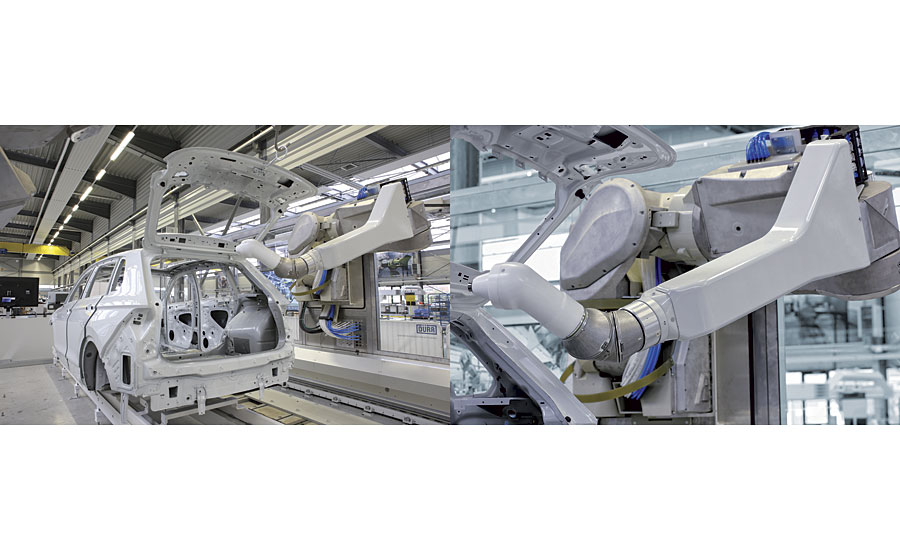
FIGURE 1 » The EcoRP E043i third generation of robots includes a seventh axis and does away with the need for a rail in many cases.
Dürr significantly improved the MTTR (Mean Time To Repair) and MTBF (Mean Time Between Failure) on its third generation of robots. Access to the components integrated in the robot has been simplified with quick fasteners at all maintenance openings and zip fasteners in the robot’s protective cover, which helps shorten the MTTR. Another feature of the new robot system is its freedom of positioning in space, which opens up numerous applications and increases its flexibility. New door openers for the painting robot have also been introduced. The openers have an additional pivot axis that enables automatic cleaning, a slim design for improved air flow in the booth and a larger operational range.
High-Performance Control Technology
New control technology has been developed for the third-generation robots (Figure 2). The control cabinets have much smaller dimensions. This enables the width of the robot cabinet to be reduced by 35% from 1,200 to 800 mm, solving many space-related problems in the plant, particularly for brownfield projects.
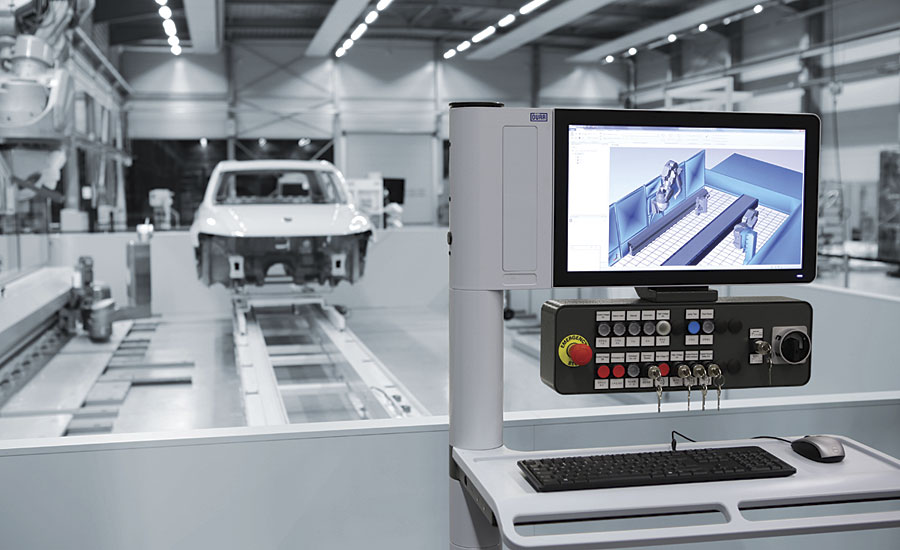
FIGURE 2 » New control technology: compact, efficient and cloud-compatible. The picture shows the slim control unit with integrated operating console.
An integrated safety controller monitors the workspace of the robots. The keywords here are safe logic, safe motion and safe robotics. A new and robust real-time operating system and a high-performance CPU ensure a high processing speed, fast memory access and much shorter boot times. The process controller is also integrated. This means the same controller for all processes and robots, the same interfaces with peripherals and no change for the customer. The drive controllers communicate with the motors via a new encoder system. By integrating an encoder box and condensing the signals, it was possible to reduce the number of signal lines to just one. This reduced the cross section of the cabling by 40% and shortened the installation time.
The most important piece of technology for any digitized factory is efficient MES (Manufacturing Execution System) software, which monitors and controls the production process. The iTAC.IoT.Suite MES product from Dürr is a standardized, modular production control system that can be used to control an entire factory, from the press line through to final assembly. Its features include production overview and evaluation, warehouse and energy management as well as solutions for collecting quality data. The EcoScreen 4.X visualization solution is HTML5-compatible and available on all current mobile devices. The software offers modularity and flexibility along the value chain with 17 individually configurable modules at the moment.
Revolution in Paint Curing
The new EcoInCure oven is flexible, energy efficient and of the highest quality (Figure 3). In a revolutionary departure, the vehicle body is heated from the inside out. The bodies are no longer conveyed longitudinally through the dryer, but transversely in cycles. This enables them to be heated from the inside. Nozzles blow hot air far into the interior of the vehicle body through the opening for the windshield. The result is a clear improvement in the coating values, as confirmed by leading paint manufacturers. The dryer also offers a reduction of up to 30% in heat-up times and up to 25% in energy consumption. It also uses the calculation of the heat-up curve to generate an electronic quality card for each vehicle body, thereby permitting full traceability of the drying conditions. The dryer is also integrated into the higher-level, intelligent iTAC.IoT.Suite production control system.
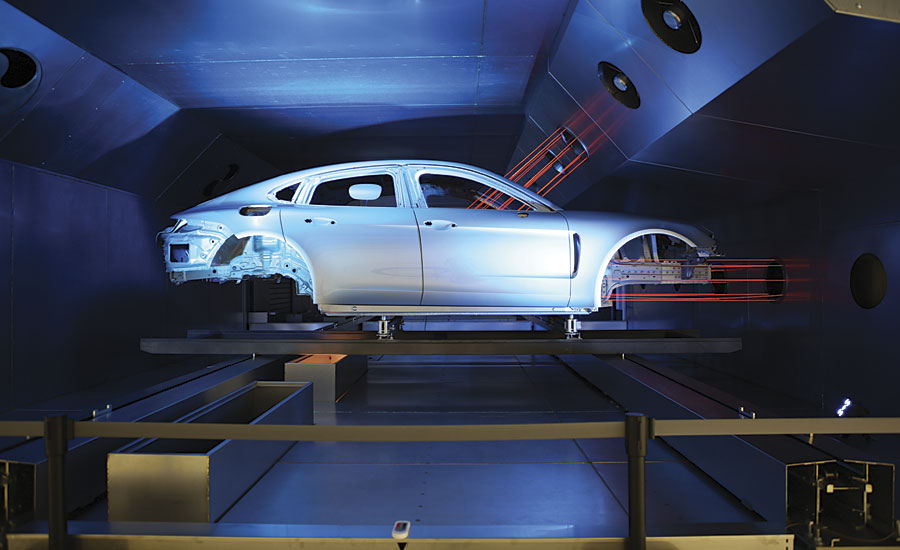
FIGURE 3 » EcoInCure, the innovative solution for curing vehicle bodies from the inside, permits an optimal topcoat application with considerably improved coating values and reduced energy consumption.
Focused Paint Application Quality Control
Checking the paint application quality is essential in a paint shop with fully automated processes. This is still done visually by workers, who carefully examine the surface of the vehicle body. This requires a high level of concentration, which leads to fatigue and an increased risk of flaws going unnoticed. EcoReflect offers an ergonomically optimized solution. The arched design of the light tunnel ensures homogeneous illumination and minimal glare (Figure 4). The use of LED technology guarantees low energy costs and minimizes maintenance time. The data collected is entered intuitively, quickly and reliably using the EcoPad mobile tablet and transferred to the production control system.
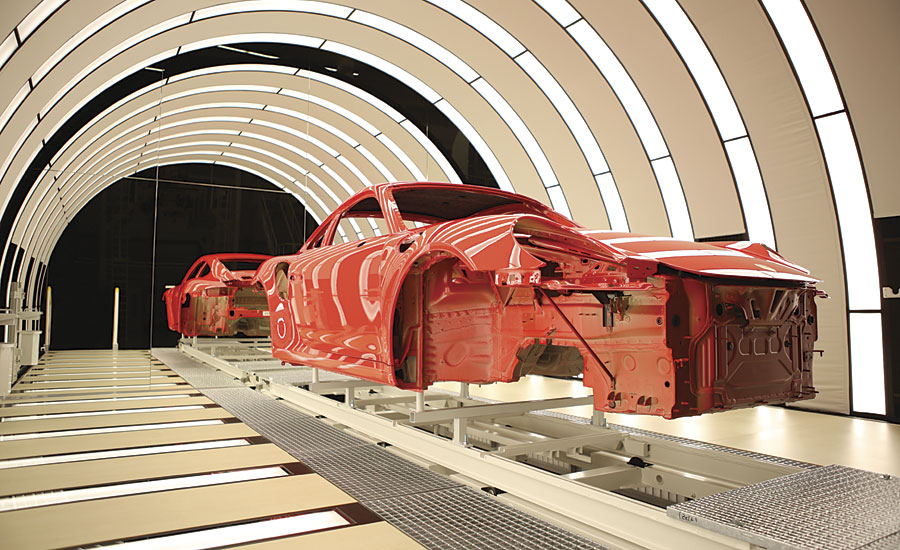
FIGURE 4 » With its energy-efficient LED technology, EcoReflect ensures a continuous reflected image, improved luminance distribution, and stable, fatigue-free visual perception.
The Latest in Dry Separation
No matter how efficient application is, painting will always produce overspray. In 2008, Dürr introduced the EcoDryScrubber separation system, a fully automatic system that uses limestone powder as a binding material for overspray (Figure 5). It was a revolutionary development, which enabled much of the booth air to be recirculated. Since then, almost all new paint shops built by Dürr have been equipped with this energy-efficient and environmentally friendly technology. A new innovation for the system is the intelligent and self-correcting system control software, which ensures continuous monitoring of each individual module. This individual control enables the best possible use to be made of the limestone powder. The new approach of demand-based swirl application and replacement of the powder reduces plant costs and wear.
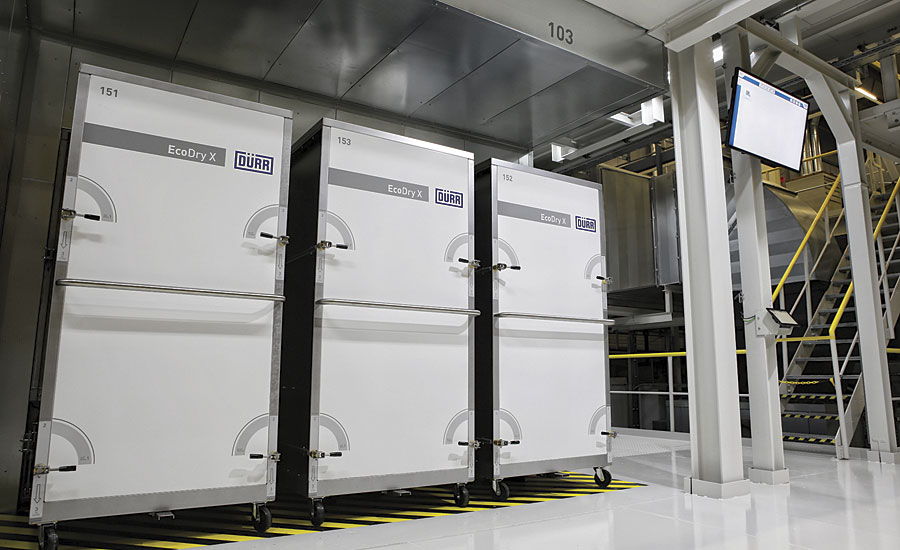
FIGURE 5 » EcoDry X: a clean, semi-automatic and robust dry separation solution for paint overspray. Easy to operate and maintain, and suitable for all paint systems. The photo shows the filter trolleys docked to the booth.
Another much simpler and cheaper solution for dry overspray separation is the EcoDry X system. It is a semi-automatic, multistage separation solution that uses standardized cardboard filter boxes that are easily changed. Energy-efficient air recirculation can also be realized with this system thanks to its high exhaust air quality with values of around 1 mg/m³. Once saturated, the filter boxes are sent for thermal recovery.
High-Efficiency Application Technology
Despite efficient overspray separation systems, high paint application efficiency is still the top priority. The EcoBell3 atomizer series is a benchmark in this regard, as well as in application quality. Dürr recently added the EcoBell3 Cx to the series (Figure 6).
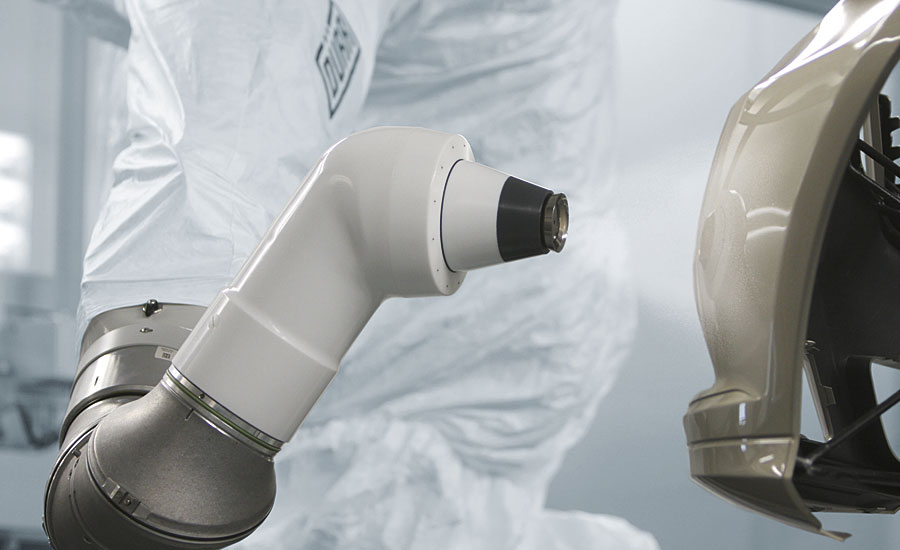
FIGURE 6 » The EcoBell3 Cx replaces the EcoBell3 C and features a much more compact design. It is intended for painting plastic parts and for use in combination zones.
This atomizer’s flexibility makes it ideal for painting plastics as well as for combination zones. The plastic parts to be painted include both small and large surfaces. The requirement is the same for combination zones, where both the interior and exterior of the vehicle are painted. The compact dimensions of the atomizer guarantee optimum access, even with complex shapes. Robust, high-voltage technology, minimal inherent soiling, and short auxiliary process times increase plant capacity and productivity.
High flexibility is also required in the application of high-viscosity materials. The EcoGun2 3D delivers this flexibility in a lightweight and compact applicator (Figure 7). The use of additive manufacturing methods enabled the perfect channel layout in the applicator head. This reduces the pressure level during application by up to 30 bar, decreases shearing of the material and extends the service life of the applicator.

FIGURE 7 » The new EcoGun2 3D is a lightweight and flexible universal applicator for all sealing materials and processes. The photo on the left shows flatstream application for seam sealing, while the photo on the right shows surface application.
Digitization and Big Data
Dürr is continually working on improving the efficiency of modern plant components and systems beyond the sum of their individual parts. Thousands of sensors supply vast amounts of data each day; this data is saved, just to be deleted. However, it contains important information about the plant conditions, processes and products. Dürr offers several solutions that analyze and link this data, equipping plants with knowledge-based algorithms to make them intelligent and self-regulating. These solutions implement demand-driven control based on the plants’ current operating condition. The EcoSmart VEC is a fully automatic air management system for paint ovens. The EcoScreen Maintenance Assistant determines the plant condition based on running times, automated checking functions and wear models, and provides important information for preventive maintenance. The EcoPad also assists with maintenance by making all the relevant information available locally, directly at the plant (Figure 8).
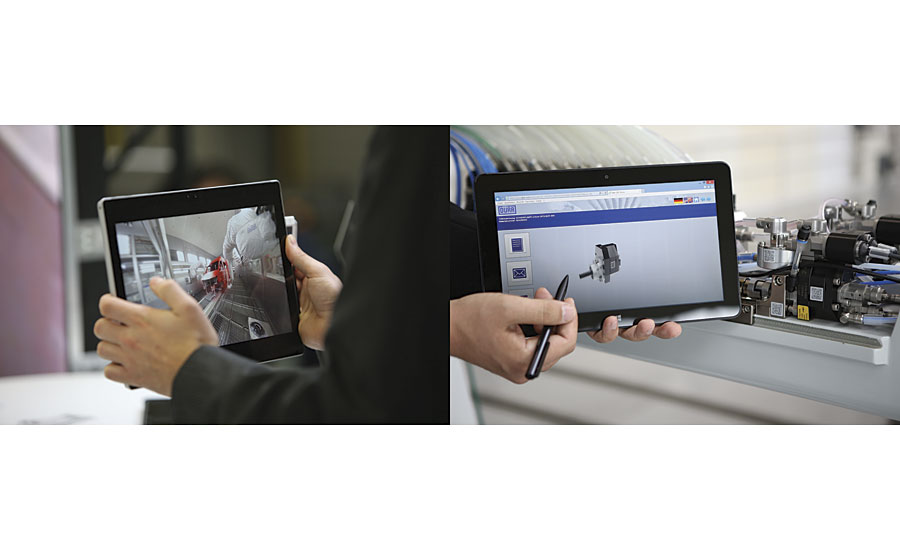
FIGURE 8 » With the EcoPad, employees can quickly and easily find all the relevant information about a product or a machine by scanning its QR code. They can access the online documentation and, if necessary, contact the Dürr hotline directly from the Pad.
Reference
Schumacher, H.: New Generation of Dürr Painting Robots. Automotive Circle International, Car Body Painting 2016, Bad Nauheim. Svejda, P.: Auf dem Weg zur Hightech-Fertigung. JOT Journal für Oberflächentechnik, September 2016.
For more information, visit www.durr.com
Looking for a reprint of this article?
From high-res PDFs to custom plaques, order your copy today!




